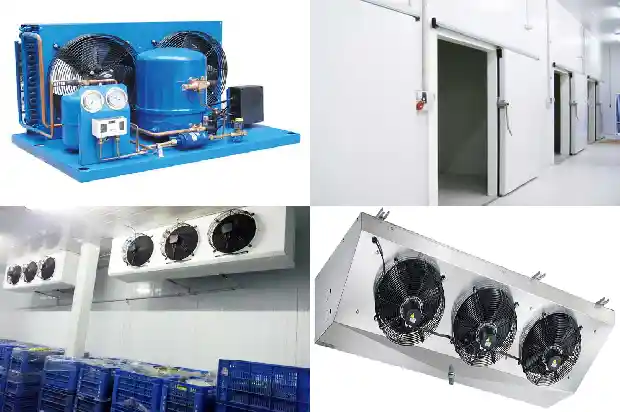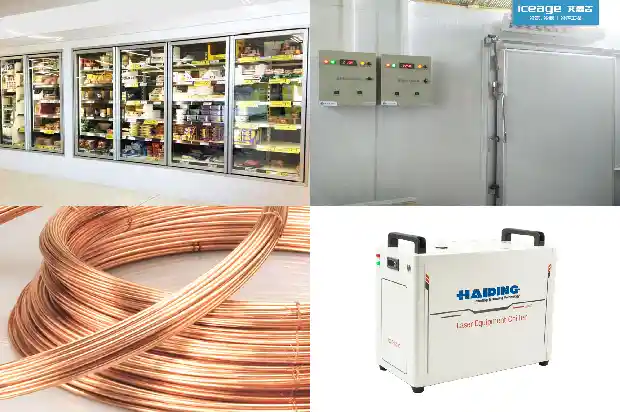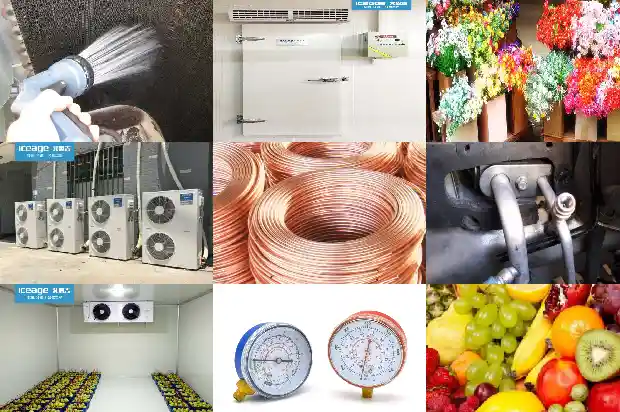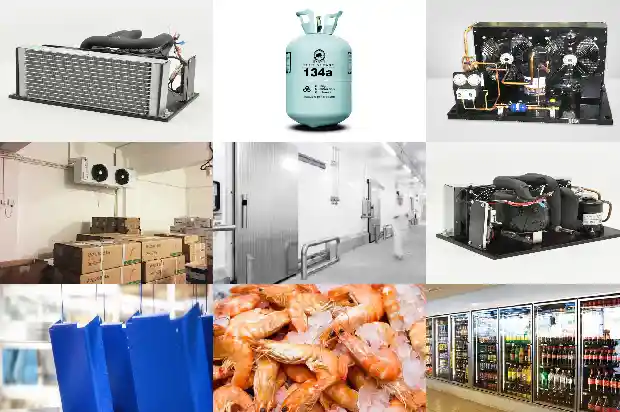Reasons and Solutions for High and Low Condensing Pressure in Air-cooled and Water-cooled Systems
2024-09-25
Condensation pressure is what we usually call "high pressure". Condensation pressure system failures usually have three types:
- High condensation pressure;
- Low condensation pressure;
I. High condensation pressure
High condensation pressure is usually caused by the following:
Air or other incompressible gas in the refrigeration system;
The condenser surface is too small;
Too much refrigerant is charged in the refrigeration system (liquid recovery in the condenser);
The condensation pressure regulation is set to a too high pressure;
Fouling on the condenser surface.
The above are the common failure causes for air-cooled and water-cooled systems. Troubleshooting methods:
Clear the condenser by starting and running the system using a recovery system until the system reaches operating temperature. If necessary, clear it again;
Replace with a larger condenser;
Recover the refrigerant until the condensation pressure is normal. The sight glass must remain full;
Set the correct pressure;
Clean the condenser.
Regarding air condensers (finned heat exchangers), for high-pressure alarms, the following aspects usually need to be analyzed:
Defective or too small fan motor or blades.
Restricted air flow to the condenser.
Excessively high ambient temperature.
Wrong air flow direction through the condenser.
Short circuit between the air side pressure and the suction side of the condenser fan.
Troubleshooting methods:
Replace the engine or blades, or replace both the engine and blades.
Remove obstacles at the air inlet or move the condenser.
Form a clean air inlet or move the condenser.
Change the rotation direction of the fan motor.
Install pipes that may be suitable for outdoor air.
Regarding water-cooled condensers (finned heat exchangers), for high-pressure alarms, the following aspects usually need to be analyzed:
Excessively high cooling water temperature;
Too little water flow;
Sedimentation inside the water pipe (dirt, etc.);
Defective or stopped cooling water pump.
Troubleshooting methods:
Ensure a lower water temperature;
Increase the water flow, and it is possible to use an automatic water valve to increase the water flow;
Clean the condenser water pipe, which may be cleared by using deoxidation;
Investigate the cause and replace or repair the cooling water pump (if installed).
II.
Low condensation pressure;
Common causes of low condensation pressure are as follows:
The condenser surface is too large;
The load on the evaporator is small;
The suction pressure is too low, for example, insufficient liquid in the evaporator;
The compressor suction valve or discharge valve may leak;
The pressure setting of the condensation pressure regulating valve is too low;
The uninsulated receiver placed is too cold compared to the condenser (the receiver is used as a condenser);
The cooling air temperature is too low. (air-cooled)
Excessive air volume in the condenser. (air-cooled)
Excessive water flow. (water-cooled)
Too low water temperature. (water-cooled)
According to the above failures, we troubleshoot one by one according to the following methods:
Adjust the condensation pressure or replace the condenser;
Adjust the condensation pressure;
Find faults on the pipeline between the condenser and the thermal expansion valve;
Replace the compressor valve plate;
Set a correct pressure for the condensation pressure regulating valve;
Move the receiver or install a suitable insulation cover for the receiver;
Adjust the condensation pressure;
Replace a smaller fan or adjust the motor speed;
Reduce the cooling water flow;
Increase the cooling water temperature.
Related Articles
- What Are the Common Reasons for Difficulties in Cooling a Cold Storage?
- Analysis of Seven Reasons for Ice Formation in Computer Room Air Conditioners
- Reasons for Frost Formation in Cold Storage and Defrosting Methods
- What Are the Reasons for Insufficient Air Output of Screw Air Compressors?
- Reasons for Pump Body Failures in Cold Storage Compressors
- What are the reasons for the inactivity of the automotive air conditioning compressor? What are the common faults?
- What are the reasons for the frequent start-up and tripping of the refrigerated air dryer in the cold storage?
- 15 Reasons for Excessive Temperature Rise of Motors
- Reasons for Installing Thermal Insulation Layers in Cold Storages
- What are the reasons for the poor oil return of screw compressors?
- 7 Reasons for Low Air Pressure in Cold Water Unit
- Reasons for Higher Cost of Controlled Atmosphere Cold Storage than Ordinary Cold Storage
- Five potential reasons for the deteriorating performance of car air conditioning
- Nine common reasons for compressor damage
- Common Faults and Solutions of Central Air - conditioning Chiller Units
- Common Faults and Corresponding Solutions of Chillers During Use
- 9 Heating and Cooling Solutions: Pros and Cons You Must Know!
- Common Issues in Chiller Operation and Solutions
